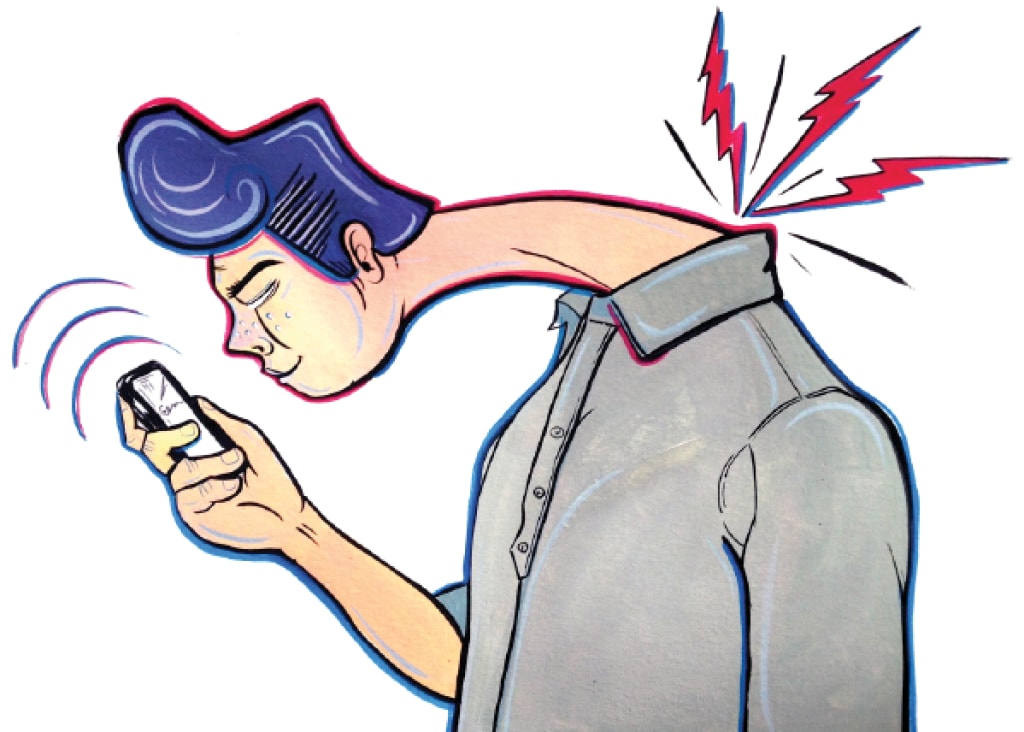Is Technology Morphing Our Bone Structure?
The Biomechanical Impact of Digital Devices: Exploring the Controversy Surrounding Text Neck and Its Potential Consequences

In recent times, a fascinating topic has gained prominence in various media outlets – the potential influence of cellphones on the physical structure of our bones. This intriguing subject stems from a scientific study suggesting that the use of phones and tablets might lead to significant and lasting changes in our bodies. Over the past few years, researchers David Shahar and Mark Sayers, experts in biomechanics at Australia's University of the Sunshine Coast, have delved into the realm of osteobiography and biomechanics to examine how modern technology interacts with our bodies. Their study brings to light surprising findings regarding the impact of prolonged device usage on our skeletal structure.
Biomechanics is a field that explores how mechanical principles apply to living organisms, encompassing everything from the way humans run to the manner in which insects maneuver their wings. In this context, Shahar and Sayers have ventured into osteobiography, a discipline that deduces an individual's life experiences from their skeletal remains. This study's significance lies in its revelation that contemporary technology is shaping the skeletal structure of young individuals.
So, how does this phenomenon occur? The focus is on a particular anatomical feature known as an external occipital protuberance (EOP), often humorously likened to a "foam ball" or "devil-like horn." In reality, the EOP is a bony projection located at the rear of the skull, connected to the nuchal ligament. This ligament plays a vital role in connecting neck muscles to the skull, with the EOP acting as an anchor at the upper end of this ligament.
The study, which involved analyzing chiropractors' X-rays of individuals spanning ages 18 to 86, aimed to gain insight into how skeletons evolve over time. The researchers observed that the EOP appeared to be more pronounced in young people who frequently engage with phones and tablets. The hypothesis suggests that as individuals bend their necks forward during screen usage, excess pressure is exerted on the area where the nuchal ligament connects to the skull. Consequently, the EOP gradually elongates, potentially growing several millimeters in length. This phenomenon, often referred to as "text neck," presents a noticeable change in the skeletal structure, particularly among younger generations.
Surprisingly, the findings showed a prevalence of text neck mostly among men. In 2016, Shahar and Sayers reported that 67% of men displayed an enlarged EOP compared to 20% of women. By 2018, their study expanded to encompass 1,200 individuals, further emphasizing that males were significantly more prone to developing larger text necks. These findings raise an important question – what are the potential health consequences of this change?
While debates surrounding cellphone radiation and health concerns have existed for some time, Shahar and Sayers' research adds a new dimension by addressing how technology affects our physical bodies. The elongation of the EOP has been described as a degenerative process, indicating that prolonged use of devices could exacerbate this issue among young individuals. Additionally, the emergence of conditions like "text thumb" or thumb arthritis further accentuates the potential consequences of constant device interaction.
However, it's worth noting that this study and its findings have received both attention and criticism. Some experts argue that the elongation of skull bones, particularly among males, is not a new phenomenon and is not solely attributed to device usage. As with any scientific endeavor, skepticism and thorough examination of evidence are essential.
In conclusion, the impact of technology on our lives is undeniable, and Shahar and Sayers' study contributes to the ongoing conversation about its effects. Whether or not we are witnessing the emergence of "horns" or "spikes" as a result of device usage remains debatable. Nevertheless, the study underscores the importance of understanding how technology interacts with our bodies and prompts us to consider the implications of our constant interaction with modern devices. As the debate continues, it will be intriguing to see how technology's influence on our physical well-being evolves in the years to come.
About the Creator
Enjoyed the story? Support the Creator.
Subscribe for free to receive all their stories in your feed. You could also pledge your support or give them a one-off tip, letting them know you appreciate their work.





Comments
There are no comments for this story
Be the first to respond and start the conversation.